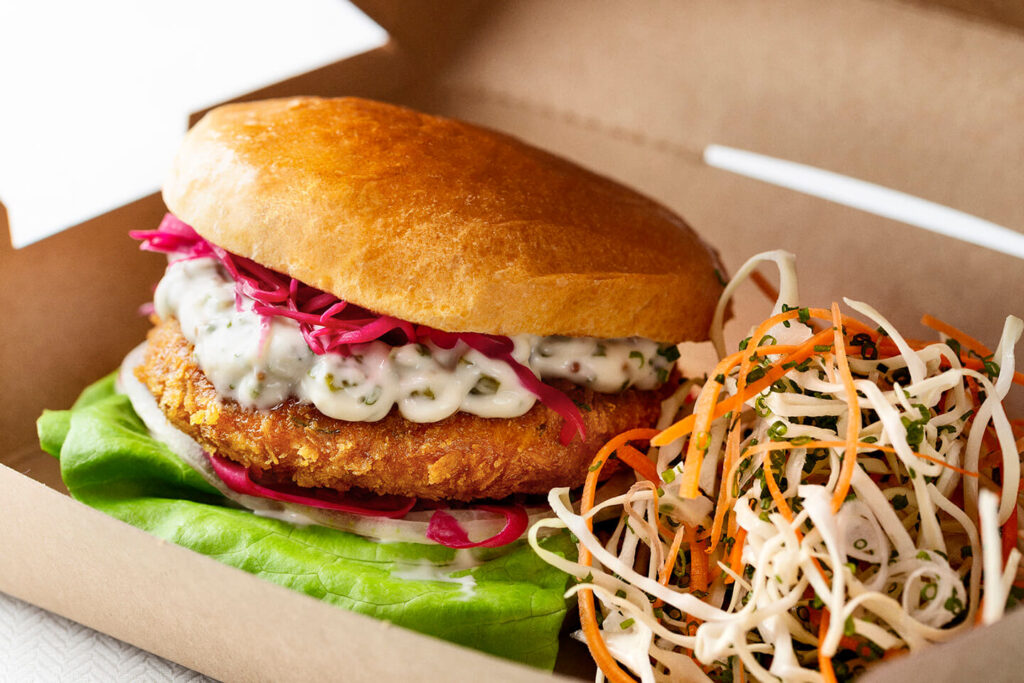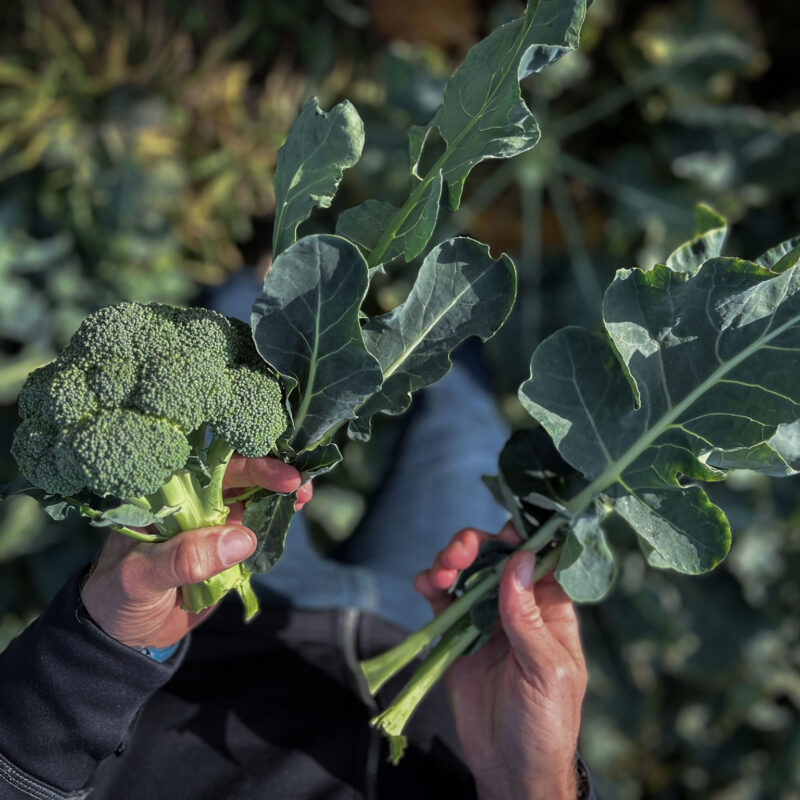Underutilized Fish Species – Swedish Bream From Lake to Plate
Sweden has large resources of nutritional blue food, but only a few species are landed and marketed. Salmon, shrimps, herring, and cod account for 65% of all the blue food consumed in Sweden, while valuable but less known species, such as bream, are not seen as commercially viable. Together with the County Administrative Board of Stockholm and the Swedish Inland Fishermen’s Federation, Axfoundation set out to explore the possibilities to make use of these species through attractive food products and efficient infrastructure. The result is, among other things, the Minced Bream (Braxenfärs) – a versatile product with a neutral, fine taste which has received positive reactions from both school students and chefs.
The Issue
Despite a large variety of fish species in Swedish lakes, only a few make it to the plate. Less known species further down in the food chain are thrown back into the water or digested into biogas. These species, such as roach, ide, bream, and bleak, were historically used in Swedish cuisine, but are today not seen as commercially viable. At the same time, as much as 70% of all fish consumed in Sweden is imported. This waste of resources takes place despite the high demand for locally captured fish, especially within the public sector.

The project has turned the underutilized Swedish bream, a bycatch to pike-perch, into an appreciated resource.
Our Solution
There is a need to make use of underutilized fish species and in turn, achieve a more balanced fishery. A more balanced fishery throughout the food chain could contribute to better use of resources, and increased availability of nutritious blue food. It could also reduce our dependence on imports of blue food from across the globe.
However, the challenges are many; a lack of infrastructure, proper chains of logistics to catch and sell local fish from Swedish lakes, and consumer skepticism toward unfamiliar species, to name a few.
Our Work
In 2018, Axfoundation, the County Administrative Board of Stockholm, and the Swedish Inland Fishermen’s Federation, teamed up with researchers, dietitians, professional fishermen, wholesalers, and retailers. The goal was to better understand the stock of underutilized species in Swedish lakes and to evaluate their potential as nutritious, tasty, and sustainable fish products – and together develop an infrastructure to make use of these species.
The possibility of utilizing far more of each caught or farmed fish was investigated by using modern techniques to extrude the meat from between the bones. Today, an average of only 60 % of the whole fish is used for food and the waste is at best used as animal feed. By utilizing more parts of the fish, it is possible to increase the availability of nutritious blue food and reduce food waste. Another central part of the project concerned the logistics chain and production opportunities where several suppliers and variants were evaluated.
Together with a number of actors, various sensory qualities of blue food (for example; smell, taste, texture) were evaluated with positive results. To effectively bring new products and raw materials to the market, an important part of the project was also to practically test the product – to cook, try out flavors, write recipes and test the results on different target groups for both commercial restaurants and the public meal. Therefore, different bream products, such as bream burgers and quenelles, was developed and received positive reactions from chefs and guests at restaurants, school kitchens, and elderly care homes.

Minced bream is a versatile product with a neutral taste.
Results
The project has turned the underutilized Swedish bream, a bycatch to pike-perch, into an appreciated resource. The joint initiative has resulted in a large-scale infrastructure to handle, process and sell fish from Swedish lakes, but also several sustainable, nutritious, and tasty food products. The project led to the production of “Braxenfärs”, a locally produced minced bream with a neutral, fine taste resembling that of perch.
Minced bream is today served in both public kitchens and at restaurants. In spring 2022, bream fritters became one of the most popular products at the restaurants of Urban Deli. At the end of 2022, minced bream fish cakes became available in retail through Axfood under the brand name Garant.
By further developing the infrastructure and evaluating the bream as not just a bycatch to pike-perch but a nutritious blue food product, small-scale fishermen have gained an additional source of income.
Results from the stock assessment: Catches can be increased
In the initial project phase, stock estimates and mapping of unwanted substances in bream were carried out by the County Administrative Board of Stockholm, the Swedish University of Agricultural Sciences (SLU) Aqua, and the Swedish Environmental Institute (IVL). The assessment concluded that catches of bream can be increased in the two Swedish lakes Vänern and Mälaren. IVL also found that the levels of environmental toxins in bream are generally low, both in absolute numbers and when compared to other fish species; bream could safely be eaten several times per week.
Bream given green light in WWF guide
The bream from the Swedish lakes Vänern and Mälaren was given the green light in the WWF Seafood Guide in 2020, which ensures sustainable stocks and fishing methods. Minced bream was also included as a Best Practice in the WWF report “A Biodiversity Guide for Business.”
Climate-smart logistics chain
The project has developed a climate-smart logistics chain for blue food in Swedish freshwater. As the bream is a by-catch, it’s transported with other species like pike-perch. Therefore, no extra fuel or energy is used to land and market the bream. In order to determine if the minced bream was an environmentally sustainable protein source from a lifecycle perspective, a lifecycle analysis was conducted through a thesis at KTH Royal Institute of Technology. The analysis concluded that the minced bream has a low environmental impact compared to other animal-based protein sources. Only legumes perform in the same category or better. Products using Swedish minced bream therefore only make up a third of the climate impact to that of for example salmon.
A replicable project for more fish species?
Going forward, Axfoundation is continuing to focus on other underutilized species, and increasing the share of fish becoming food instead of feed. Axfoundation is also investigating the possibility of eco-labeling the raw material so that the consumer knows that the fish is fished in a sustainable and traceable way.
We have shown that it is possible to create cost-efficient logistics and production as well as attractive products based on locally sourced fish. The fishing of bream also strengthens the Swedish freshwater fishing industry.
– Veronica Öhrvik, Project Manager, Future Food, Axfoundation
Obstacles to Scaling Up
Axfoundation has shown that through collaboration and with a large dose of stubborn determination, it is possible to develop new products based on underutilized, local, sustainably sourced fish. However, to scale up further and ensure sustainable consumption of blue food in Sweden, industry and authorities must work together and remove a number of obstacles. There is a need for:
- Collaboration across industries and authorities to introduce other species and highlight their benefits to the market.
- Increased data and analysis on the availability of underutilized species provided by authorities and academia.
- An infrastructure for commercial fishing and reduction fishing to enable logistics and the processing of underutilized species.
- Clear advice from authorities concerning the toxic aspects of fish from Swedish lakes.
- Change of dietary habits and an increased consumer demand through information and education.
Axfoundation’s strength lies in the ability to gather representatives from different parts of the value chain and develop a practical, scalable solution to show that the business model works in practice. Now that we have created a proof of concept, we are eager to see how other organizations will continue to scale and further develop products based on these results.
– Madeleine Linins Mörner, Program Director Future Food, Axfoundation
Partners
The project has been run by Axfoundation together with the County Administrative Board of Stockholm and the Swedish Inland Fishermen’s Federation (SIC). Partners along the way included grocery retailer Axfood, wholesaler Chipsters, resource center Eldrimner, catering distributor Fiskano, suppliers Fisk Idag and Grönssakshallen Sorunda, the development node MatLust Södertälje and Swedish Fish Auctions. The project has partly been financed by the European Agricultural Fund for Rural Development (EAFRD).
























































